Bristol University Has a 3D Hologram Tech that Features Haptic Feedback
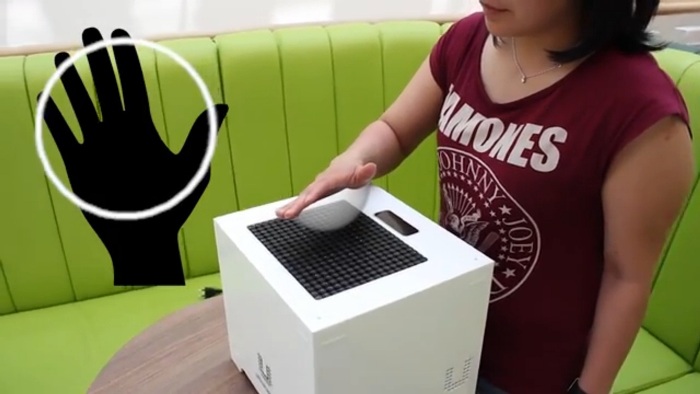
Screenshot of the Youtube video posted by the Bristol Interation and Graphics Group (BIG) – https://www.youtube.com/watch?v=kaoO5cY1aHk
Hardly anyone has had the experience of viewing a real hologram projection and Bristol University is already presenting a 3D touchable hologram tech that also comes with haptic feedback. Yes, technology has progressed this rapidly. This technology is certainly more impressive than MIT’s shapeshifting display tech – if it indeed lives up to the hype.
Is It Really a Hologram?
Many would likely ask if this hologram is a real hologram, considering how the word has become a misleading marketing buzzword just like what one Chinese smartphone manufacturer did with the Takee holographic smartphone. Fortunately, yes it is indeed a real hologram technology. It projects a 3D image in mid-air and is not just some “hologram effect” that tries to trick the eyes.
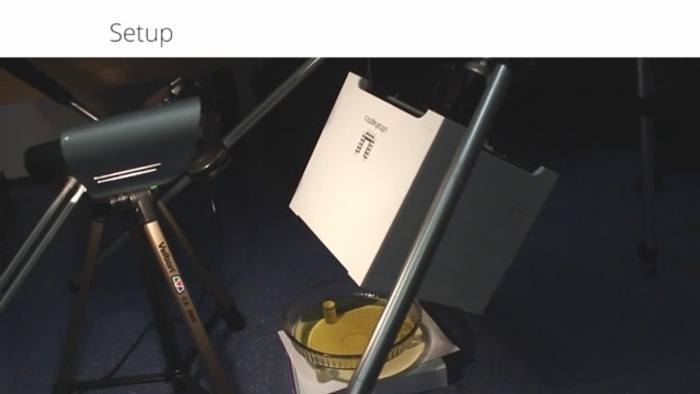
Screenshot of the Youtube video posted by the Bristol Interation and Graphics Group (BIG) – https://www.youtube.com/watch?v=kaoO5cY1aHk
This new hologram tech is presented in a research paper published in the current issue of the ACM Transactions on Graphics. It is also being presented at the SIGGRAPH Asia 2014 conference (December 3 to 6).
The research on this new hologram technology entitled “Rendering Volumetric Haptic Shapes in Mid-Air Using Ultrasound” is helmed by Dr. Ben Long, who is joined by Professor Sriram Subramanian, Tom Carter, and Sue Ann Seah from the Department of Computer Science of the University of Bristol. Dr. Ben Long is a research assistant from the Bristol Interaction and Graphics Group (BIG). In an interview with University of Bristol News, Dr. Long said: “IN the future, people could feel holograms of objects that would not otherwise be touchable, such as feeling the differences between materials in a CT scan or understanding the shapes of artefacts in a museum.”
Ultrasound-based Hologram with Haptics
The most interesting part of this new tech is the ability to create three-dimensional haptic shapes in mid-air by using focused ultrasound. Yes, the generally invisible sound is being used to create something that can be felt by touch.
The system produces an invisible virtual 3D shape that can be added to 3D displays to produce something that is both visible and touchable. Basically, the ultrasound-based images produced by Bristol University’s new tech is not going to be similar to what a typical hologram projector can create. This new tech is meant to be used in consonance with a standard hologram producing device to create a more immersive and visually-engaging experience.
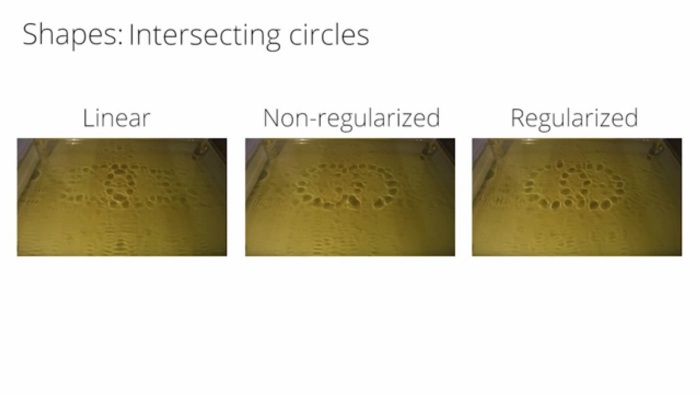
Screenshot of the Youtube video posted by the Bristol Interation and Graphics Group (BIG) – https://www.youtube.com/watch?v=kaoO5cY1aHk
How Does It Work?
This touchable hologram technology makes use of ultrasound focused onto the hands of the person who is trying to touch a visible 3D hologram. It uses ultrasound focused in complex patterns to create haptic feedback. The disturbances in the air created by the focused ultrasound allow the person touching the hologram to sense something, comparable to the haptic feedback produced in most mobile devices. A person can perceive a discernible haptic shape after an acoustic interference pattern is generated a precisely controlled two-dimensional phased array of ultrasound transducers.
In addition to the speakers that produce concentrated ultrasound waves, a sophisticated motion sensor system is also on place. This system tracks the exact position of the hand that tries to touch the visible hologram.
To demonstrate how the technology works via video, the researchers projected the ultrasound-based hologram on a thin layer of oil to visualize the depressions created by the focused ultrasound waves.

Screenshot of the Youtube video posted by the Bristol Interation and Graphics Group (BIG) – https://www.youtube.com/watch?v=kaoO5cY1aHk
Applications
There are many interesting applications of this technology. Some may not seem practical at present but they should eventually become more acceptable and appreciated in the future. One of the applications for this hologram tech is enabling better controls for a car’s infotainment system. With the floating haptic feedback, a driver will no longer have to glance at the dashboard’s interface since the virtual buttons can already be felt.
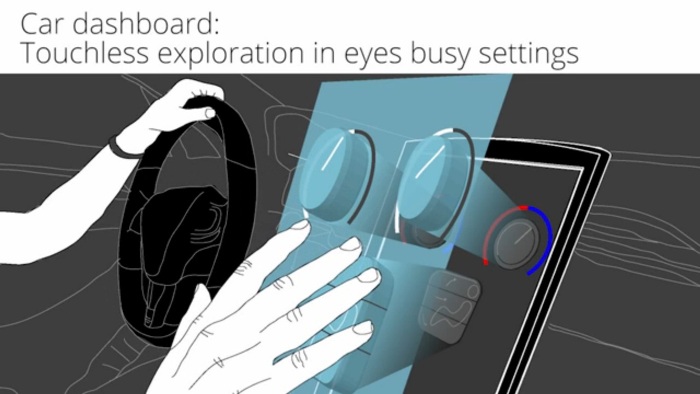
Screenshot of the Youtube video posted by the Bristol Interation and Graphics Group (BIG) – https://www.youtube.com/watch?v=kaoO5cY1aHk
It can also be used at work to provide more impressive presentations in business meetings or conferences. Additionally, it can be used in exhibits where it is not allowed to actually touch certain items. In the field of medicine, this ultrasound based hologram tech can be used in allowing surgeons to feel a tumor while exploring a CT scan.
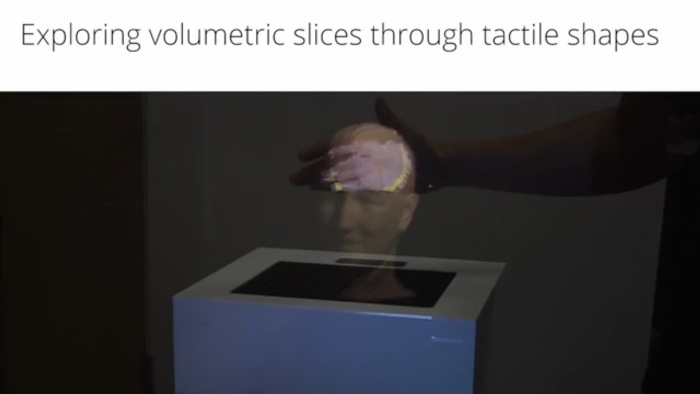
Screenshot of the Youtube video posted by the Bristol Interation and Graphics Group (BIG) – https://www.youtube.com/watch?v=kaoO5cY1aHk
There is no word yet on whether or not this technology will be deployed soon. There are no details on parties that could be interested in pursuing it. Hopefully, this technology gets more attention. The idea on using ultrasound for haptic feedback is particularly interesting and will likely help enhance human-computer interaction even with flat touch displays with hologram effects.